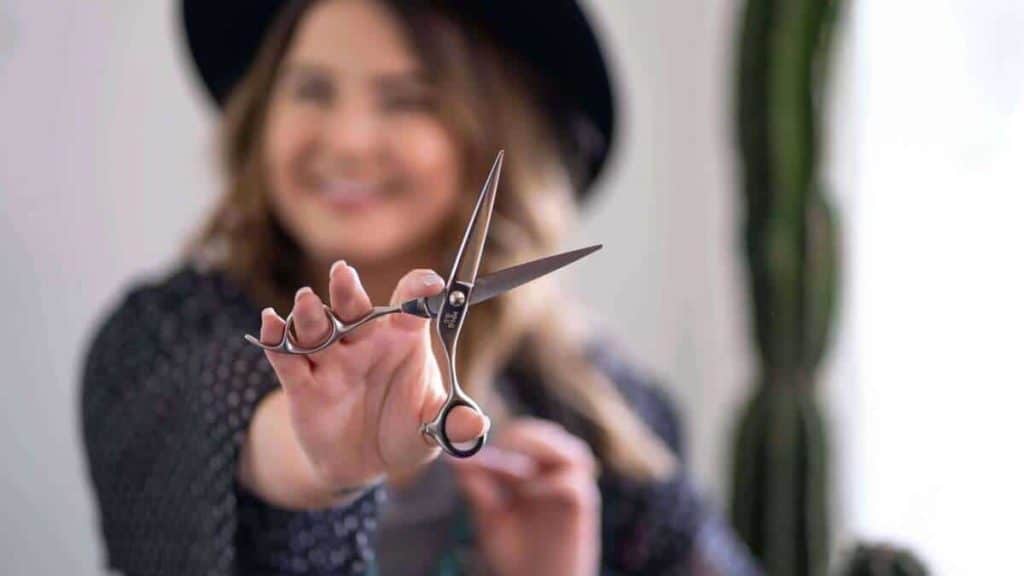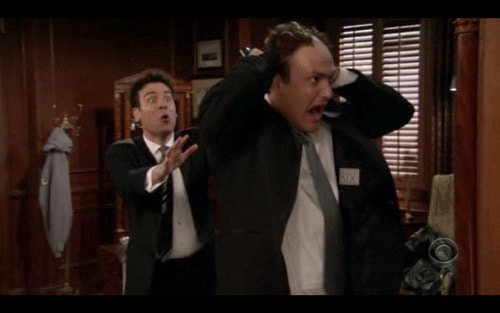If you’re living or spending a lot of time in a Spanish speaking country, at some point you may need to get a haircut. Knowing some basic vocabulary to use with your hairdresser not only is going to help you to get the hairstyle that you want but also it’ll give you the chance to practice your Spanish in a real conversation.
So, how do you ask for a haircut in Spanish? The easiest way to ask for a haircut in Spanish is by using one of the following phrases:
- Quisiera un corte de cabello – I’d like a haircut
- ¿Me puede cortar el cabello? – May I have a haircut?
- Me gustaría cortarme el cabello – I’d like to get a haircut
Even though these phrases are very useful when asking for a haircut in Spanish, they’re also very general. So, in order to get exactly the style you want, you’ll need to include some vocabulary to make your description better. On top of the previous examples, in this article, you’re going to learn some phrases to describe the type of haircut you want. We’ll also provide you with some of the most common vocabulary that we use in this situation. Hopefully, by the end of it, you’ll feel more confident to ask for a haircut in Spanish.
- How to Ask for a Haircut in Spanish
- Describing How you Want your Haircut
- Talking About other Services at the Barber’s Shop
- Vocabulary
- Wrapping Up
Related questions
How To Ask for a Haircut in Spanish?
As mentioned earlier, there are some general Spanish phrases that are going to help you to get a haircut. Some of them are:
Quisiera un corte de cabello I’d like a haircut
Me gustaría cortarme el cabello I’d like to cut my hair
¿Me puede cortar el cabello? May I have a haircut?

Although the meaning and intention of these phrases are the same, the main difference between them is their degree of formality. If you want to be more polite when asking for a haircut, you need to use ‘¿Me puede cortar el cabello?’ or ‘¿Me podría cortar el cabello?’. Depending on the person, ‘Quisiera un corte de cabello’ could be considered slightly more informal; however, it’s widely used among Spanish speakers.
Spanish Phrases When You Don’t Have a Haircut Appointment
In most Spanish speaking countries it’s very common to go to the hairdresser without having an appointment. Even though in this situation you can also use any of the phrases we saw before, it’s more common to use one of the following.
¿Me puede atender ahora? Are you able to see me now?
¿Tendrá tiempo de cortarme el cabello? Are you able to cut my hair now?
Notice that in the previous example, we used cortar el cabello. However, you can use another verb to describe the service you need. At the end of this article, you’ll find some helpful verbs for this situation. This is the phrase structure you need to use.
¿Tendrá tiempo de + verb to describe haircuts/hairstyle?
¿Tendrá tiempo de alaciarme el cabello? Are you able to straighten my hair now?
¿Tendrá tiempo de arreglarle la barba a mi esposo? Are you able to tidy up my husband’s beard?
This structure is very popular when you don’t have an appointment and you want to check if the hairdresser has the time to help you. If you decide to use it, keep in mind that:
- The verb that you use to describe the haircut or hairstyle you need is in its infinitive form (it’s not conjugated).
- The verb works with an indirect pronoun which is attached to the end of the verb.
¿Tendrá tiempo de pintarnos el cabello? Are you able to dye our hair?
Describing How You Want Your Haircut
At the beginning of this article, we discussed some of the general phrases that you can use to ask for a haircut. Now, it’s time to be more specific about what you want. To do so, you need to add some adjectives or nouns to describe the type of haircut or hairstyle you’re looking for. Remember that the main phrases that we’re going to use are:
- Quería…
- ¿Me puede…?
- ¿Me podría…?
Here are some common structures that you can use:
¿Me puede cortar el cabello + adjective?
¿Me puede cortar el cabello rapado? May I have a close-cropped haircut?
¿Me puede cortar el cabello degrafilado? May I have a tapered haircut?
Quisiera un corte + noun
Quisiera un corte en capas y fleco I’d like a layered cut and bangs
Quisiera un corte militar I’d like a crew-cut
Quisiera un corte + adjective
| Quisiera un corte largo | I’d like a long haircut |
If the context is clear that you’re getting a haircut, you can make some changes to the previous phrases.
¿Me lo podría cortar + adjective?
¿Me lo podría cortar degrafilado? May I have it tapered?
¿Me lo puede cortar corto a los lados y largo en la parte de atrás? Can I have it short on the sides and long in the back?

¿Me lo puede + verb?
| ¿Me lo puede recortar? | Can I have it trimmed? |
Lo + quisiera + adjective
| Lo quisiera largo | I’d like it long |
| Lo quisiera despuntado | I’d like it trimmed |
| Lo quisiera desvanecido | I’d like it faded |
In the previous examples, we replaced el cabello with a pronoun (lo). By doing this, you’ll not only make your sentences shorter, but also your Spanish will sound more natural.
Talking about your haircut’s length
When getting your haircut, it’s important to say how long or how short you want it. Just as in English, in Spanish, we use body parts as a length reference and here are some of the most common phrases we use.
Arriba de + body part
Lo quiero arriba de los hombros I want it cut just above my shoulders
”¿Me podría cortar el cabello arriba de la barbilla? May I have my hair cut above my chin?
Abajo de + body part
Lo quiero abajo de los hombros I want it under my shoulders
¿Me podría cortar el cabello under de la barbilla? May I have it cut down to my chin?
Hasta + body part
Lo quiero hasta los hombros I want it down to my shoulders
¿Me podría cortar el cabello hasta la barbilla? May I have a haircut to my chin?
Be aware that some of these sentences may sound weird in English, but in Spanish they make sense and they’re very popular. In these previous examples, the structure to talk about your hair’s length was made with some of the phrases that we learned before. In that case, we’re saying what length we want even before someone asks us. However, it can happen that the hairdresser asks you about the length, as a result, your answer would be shorter:
| Spanish | English |
| Tú: Quisiera un corte de cabello en capas | You: I’d like a layered haircut |
| Estilista: Claro, ¿qué tan largo lo quieres? | Hairdresser: Sure. How long do you want it? |
| Tú: Abajo de los hombros | You: Under my shoulders |
Talking About Other Services at the Hairdresser’s Shop

On top of offering haircuts, there are many services that you can find at a hairdresser’s. If you’re looking to get more than a haircut, here are some phrases you may find useful:
¿Me puede + verb?
¿Me puede arreglar la barba? Could you tidy up my beard?
¿Me puede pintar y rizar el cabello? Could you dye and curl my hair?
Remember that you can replace ‘¿Me puede…?’ for any other of the phrases that we’ve learned so far. As you may notice, these examples work with a Spanish verb that expresses the service you want to get. However, in Spanish, we don’t always have verbs for all the services that you can receive at a salon. In that case, you need to add the verb hacer to the structure:
Quisiera + hacerme + noun
| Quisera hacerme mechas | I’d like to get some streaks |
Keep in mind that ‘hacer’ needs to work with an indirect pronoun. As a result:
- Hacer would be in its infinitive form (is not conjugated).
- Hacer works with an indirect pronoun that is attached to the end of the verb.
Vocabulary
As you may know, in Spanish, the key to having a fluent communication when going to the hairdresser is using the appropriate vocabulary. Here are some of the most common Spanish terms that you can use at the salon.
Spanish verbs to describe haircuts and hairstyles
| Aclarar | Lighten |
| Afeitar | Shave |
| Arreglar | Tidy up |
| Alisar/Planchar | Straighten |
| Cubrir | Cover |
| Cortar | Cut |
| Decolorar | Bleach |
| Degrafilar/Escalar | Thin out |
| Despuntar/Recortar | Trim |
| Desvanecer | Fade |
| Lavar | Wash |
| Ondular/Rizar | Curl |
| Oscurecer | Darken |
| Peinar | Comb/Style your hair |
| Pintar/Teñir | Dye |
| Reducir | Reduce |
| Secar | Blow-dry |
Spanish nouns to talk about haircuts and hairstyles
| Barba | Beard |
| Barbería | Barbershop |
| Bigote | Moustache |
| Cana | Grey hair |
| Corte a capas | Layered |
| Corte de caballero | Men’s haircut |
| Corte de dama | Women’s haircut |
| Corte de cabello | Haircut |
| Corte militar | Crew cut |
| Corte recto | Blunt cut |
| Cuero cabelludo | Scalp |
| Estética/Peluquería | Salon/Hairdresser’s shop |
| Fleco/Flequillo | Fringe/Bangs |
| Grado uno | Grade one |
| Máquina | Trimmer |
| Mechas | Streaks |
| Melena | Long-hair/Mene |
| La parte de atrás | The back of my hair |
| Laca/Fijador | Hairspray |
| Lado | Side |
| Luces/Reflejos | Highlights |
| Partido/Raya del pelo | Parting |
| Patillas | Sideburn |
| Permanente | Perm |
| Puntas | Ends |
| Puntas abiertas | Split ends |
| Raíces | Roots |
| Secadora | Hairdryer |
| Tijeras | Scissors |
| Tinte | Dye |

Spanish adjectives to talk about haircuts and hairstyles
| Rubio | Blond |
| Rubio ceniza | Ash blond |
| Caoba | Chestnut |
| Castaño | Brown |
| Castaño Rojizo | Auburn |
| Negro | Black |
| Corto | Short |
| Cuadrado | Squared |
| Dañado/Maltratado | Damaged |
| Degrafilado/Escalonado | Tapered |
| Delgado | Thin |
| Desvanecido | Faded |
| Encrespado | Frizzy |
| Grueso | Thick |
| Largo | Long |
| Rapado | Shaved/Close-cropped |
| Recortado | Trimmed |
| Rizado | Curly/Curled |
| Seco | Dry |
Body Parts in Spanish (used to describe the length of your haircut)
| Barbilla | Chin |
| Cuello | Neck |
| Hombros | Shoulders |
| Nunca | Nape |
| Orejas | Ears |
Wrapping Up
In this article, we learned different phrases and vocabulary to ask for a haircut in Spanish. Remember that the key to mastering this situation is learning and using the appropriate vocabulary. Hopefully, now you’re able to describe the haircut and hairstyle that you want to get.
Related Questions
What’s the difference between ‘pelo’ and ‘cabello’ in Spanish? Both ‘cabello’ and ‘pelo’ are Spanish words for hair. However, ‘pelo’ is used to talk about the body hair and ‘cabello’ is the word that we use to refer to the hair on our head, in other words, the one that grows on our scalp.
How do you say short hair in Spanish? In Spanish, short hair is cabello corto. Corto is an adjective that we use to talk about the length of an object, as a result, we use this word when talking about our hair. Here’s more information on how to use corto correctly.



